Math Labs with Activity – Verify Euler’s Formula for Various Polyhedra
OBJECTIVE
To verify Euler’s formula for various polyhedra
Materials Required
- Cardboard models of polyhedra
- A cutter
Theory
Euler’s formula gives a relationship between the numbers of faces, edges and vertices of a polyhedron. If in a polyhedron, the number of faces be F, the number of edges be E and the number of vertices be V then by Euler’s formula F-E+ V = 2
Procedure
Step 1: Take a cardboard model of a triangular prism as shown in Figure 35.1(a).
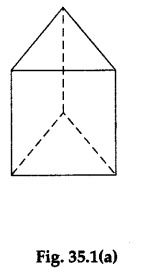
Count the numbers of faces, edges and vertices of this prism. For convenience, cut the model along the edges and open it up. It will appear as shown in Figure 35.1(b).

Step 2: Record your observations in the observation table.
Step 3: Take a cardboard model of a pentagonal prism as shown in Figure 35.2(a).
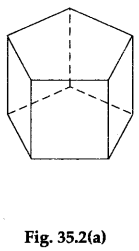
Count the numbers of faces, edges and vertices of this prism. For convenience, cut the model along the edges and open it up. It will appear as shown in Figure 35.2(b).
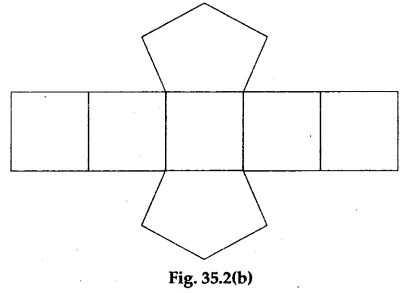
Step 4: Record your observations in the observation table.
Step 5: Take a cardboard model of a regular tetrahedron . (triangular pyramid) as shown in Figure 35.3(a).
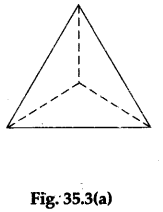
Count the numbers of faces, edges and vertices of this pyramid. For convenience, cut the model along the edges and open it up. It will appear as shown in Figure 35.3(b).
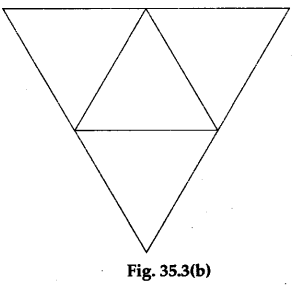
Step 6: Record your observations in the observation table.
Step 7: Take a cardboard model of a pyramid oh a quadrilateral (e.g., a square) base as shown in Figure 35.4(a). Count the numbers of faces, edges and vertices of this pyramid. For convenience, cut the pyramid along the edges and open it up. It will appear as shown in Figure 35.4(b).
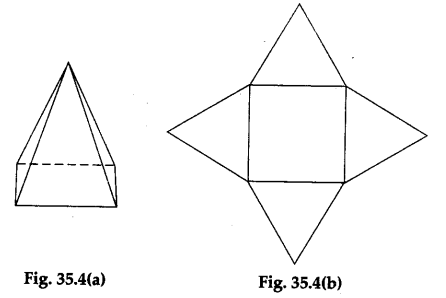
Step 8: Record your observations in the observation table.
Step 9: Take a cardboard model of a pyramid on a pentagonal base as shown in Figure 35.5(a). Count the numbers of faces, edges and vertices of this pyramid. For convenience, cut the model along the edges and open it up. It will appear as shown in Figure 35.5(b).
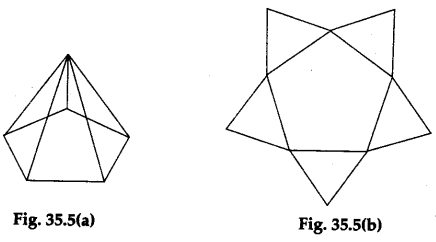
Step 10: Record your observations in the observation table.
Step 11: Take a cardboard model of a pyramid on a hexagonal base as shown in Figure 32.6(a). Count the numbers of faces, edges and vertices of this pyramid. For convenience, cut the model along the edges and open it up. It will appear as shown in Figure 35.6(b).
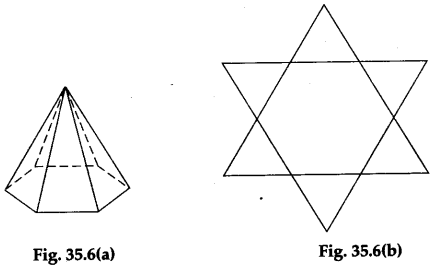
Step 12: Record your observations in the observation table.
Step 13: Take a cardboard model of a regular octahedron as shown in Figure 35.7(a). Count the numbers of faces, edges and vertices of this pyramid. For convenience, cut the model along the edges and open it up. It will appear as shown in Figure 35.7(b).

Step 14: Record your observations in the observation table.
Observations and Calculations
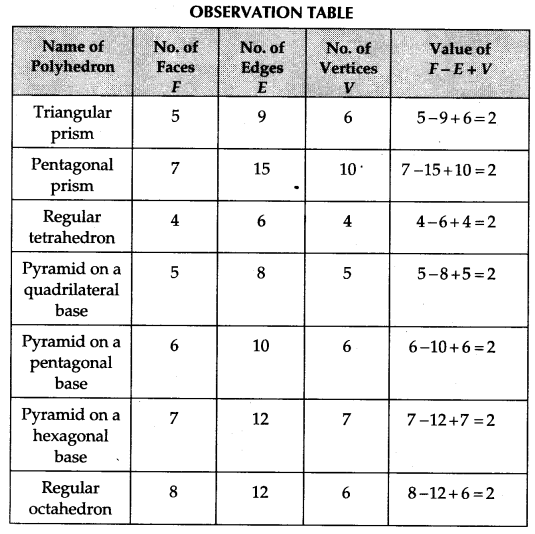
Result
Euler’s formula, F-E+V = 2, has been verified.
Math Labs with ActivityMath LabsMath Lab ManualScience LabsScience Practical Skills
